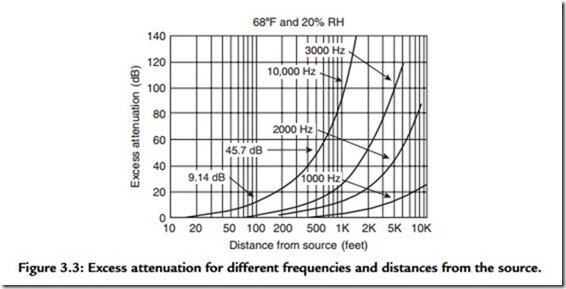Atmospheric Absorption
These other processes represent actual dissipation of sound energy. Energy is lost due to the combined action of the viscosity and heat conduction of the air and relaxation of behavior in the rotational energy states of the molecules of the air. These losses are independent of the humidity of the air. Additional losses are due to a relaxation of behavior in the vibrational states of the oxygen molecules in the air, as this behavior is strongly dependent on the presence of water molecules in the air (absolute humidity). Both of these energy loss effects cause increased attenuation with increased frequency (Figure 3.2).
This frequency-discriminative attenuation is referred to as excess attenuation and must be added to the level change due to divergence of the sound wave. Total level change is
the sum of inverse-square-law level change and excess attenuation. Figure 3.3 shows the excess attenuation difference between 1000 and 10,000 Hz at various distances.
